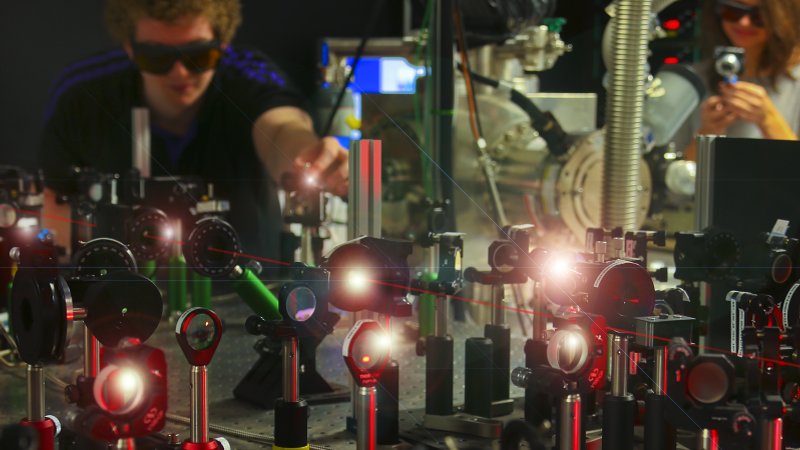Physics research at Heriot-Watt University spans from understanding the fundamentals of nature at a quantum level through to the application of physics techniques in applications as diverse as astronomical instrumentation to cell manipulation.
At Heriot-Watt University our research is organised by Research Institute rather than Academic Discipline. Our Physics Academic staff are members of our research institutes that best reflect their expertise, with the majority of our staff in the Institute of Photonics and Quantum Sciences (IPAQS) and the Institute of Biological Chemistry, Biophysics and Bio-Engineering (IB3).
If your interest is in a particular research area, you should explore the Research Institute web pages, where you can find more details about their current research activities.
To give you a feel for the range of research currently underway at Heriot-Watt University we have selected a few highlights of our recent work below.
3D Imaging using Photon Counting
In recent years, application areas for three–dimensional (3D) imaging have emerged in several fields, including manufacturing, defence, and geosciences. The new generation of 3D imaging systems based on laser radar (ladar) offers advantages in many applications. Our approach using time–correlated single–photon counting (TCSPC) affords potential advantages over non–photon–counting approaches such as improved depth resolution in which it is possible to filter a scene by distance. In this way it is possible to retrieve 3D shape information directly from the scene and separate an object of interest from background or foreground clutter by extracting a narrow depth range from the field of view.
The advantage of detection of single–photon events means that the system can be used even when there is an average of less than one photon return event per pulse, which is critical in applications involving long–distance ranging. At kilometre ranges, the low photon return rates permit the use of high repetition rate, compact, low-power laser diodes, since it is not necessary to record a return on every outgoing laser pulse. There is growing interest in depth imaging, especially as photon–counting detector and acquisition technology continues to improve, permitting faster data acquisition at longer ranges.
Seeing Around Corners using Lasers
High sensitivity photodetectors are able to measure light at the single photon level. Single photon measurements are usually performed using single pixel 'SPAD' detectors - our collaborators at Edinburgh University have developed state of the art detector arrays that are capable of delivering images of single photons.
We are using these cameras to push the limits of imaging technology. For example, we are using such quantum imaging to detecting objects that are hidden from view, e.g. by a wall or a dense, scattering medium.
